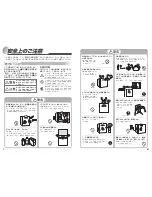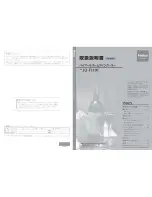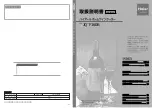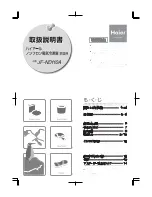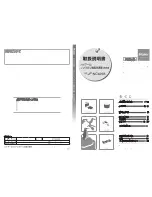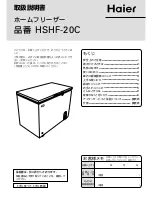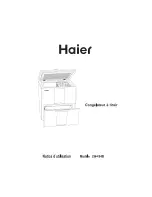
en
Defrosting
26
Packing frozen food
The correct type of packaging and material selection
are decisive factors in the retention of the product
quality, and prevent the development of freezer burn.
1.
Place food in packaging.
2.
Squeeze out the air.
3.
Pack food airtight to prevent it from losing flavour
and drying out.
4.
Label packaging with contents and date of freezing.
Suitable packaging:
■
Plastic film
■
Tubular film made of polyethylene (PE)
■
Aluminium foil
■
Freezer containers
Suitable sealing materials:
■
Rubber bands
■
Plastic clips
■
Cold-resistant adhesive tape
Unsuitable packaging:
■
Wrapping paper
■
Greaseproof paper
■
Cellophane
■
Rubbish bags and used shopping bags
Shelf life of frozen food at –18°C
Defrosting frozen food
The defrosting method must be adjusted to the food
and application in order to retain the best possible
product quality.
Defrosting methods:
■
In the refrigerator compartment (especially suitable
for animal-based foods such as fish, meat, cheese,
quark)
■
At room temperature (bread)
■
In the microwave (food for immediate consumption
or immediate preparation)
■
In the oven/cooker (food for immediate consumption
or immediate preparation)
Caution!
Do not refreeze food after it has been defrosted or
started to defrost. You can only refreeze the food after it
has been used for a ready-to-eat meal (boiled or fried).
The frozen food can no longer be stored for the
maximum duration.
=
Defrosting
Defrosting
The fully automatic NoFrost system ensures that the
appliance remains free of frost. Defrosting is not
required.
D
Cleaning
Cleaning
Caution!
Avoid damaging the appliance and the fittings.
■
Do not use abrasive, chloride or acidic cleaning
agents or solvents.
■
Do not use scouring or abrasive sponges.
Metallic surfaces may corrode.
■
Never clean shelves or containers in the dishwasher.
These parts may become deformed.
Cleaning the appliance interior
Proceed as follows:
1.
Pull out the mains plug or switch off the fuse.
2.
Take out the food and store in a cool location.
Place ice pack (if available) on the food.
3.
Clean the appliance with a soft cloth, lukewarm
water and a little pH-neutral washing-up liquid.
Caution!
The rinsing water must not run into the light.
4.
Wipe the door seal with clean water and dry
thoroughly with a cloth.
5.
Reconnect appliance, switch on and put in food.
Cleaning the equipment
To clean, take the variable parts out of the appliance.
Fish, sausage, ready meals, baked goods:
Up to 6 months
Meat, poultry:
Up to 8 months
Fruit, vegetables:
Up to 12 months






















